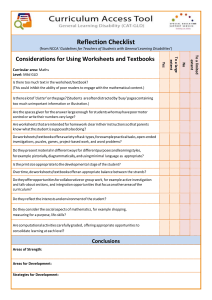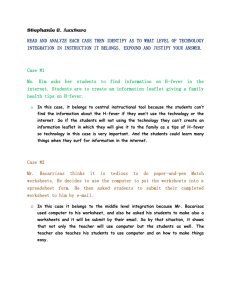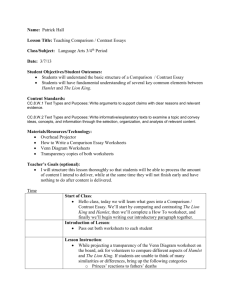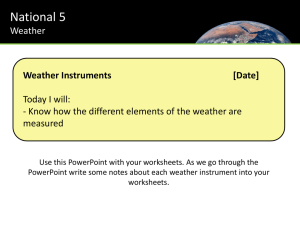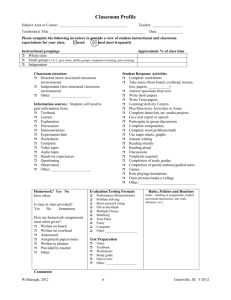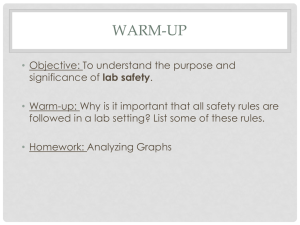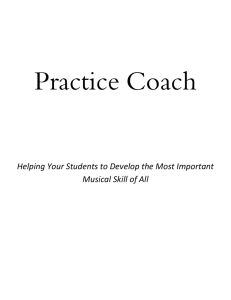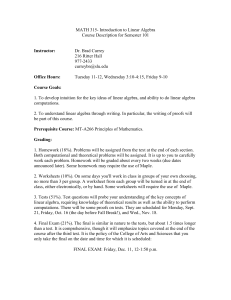An-Introduction-to-Linear-Regression
advertisement
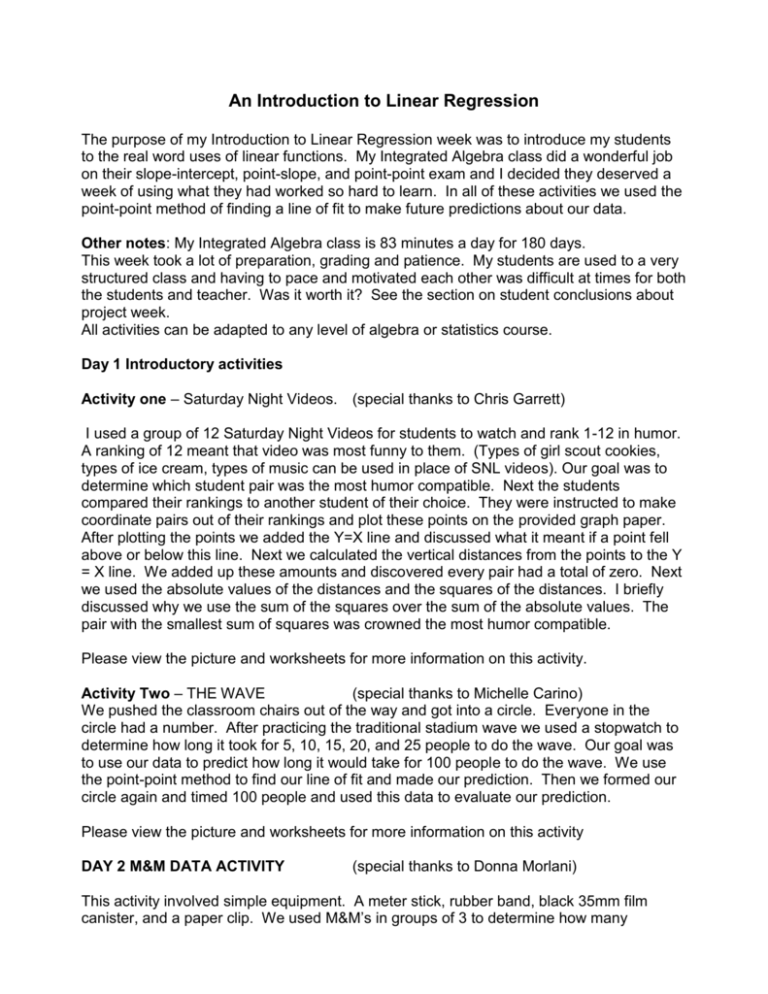
An Introduction to Linear Regression The purpose of my Introduction to Linear Regression week was to introduce my students to the real word uses of linear functions. My Integrated Algebra class did a wonderful job on their slope-intercept, point-slope, and point-point exam and I decided they deserved a week of using what they had worked so hard to learn. In all of these activities we used the point-point method of finding a line of fit to make future predictions about our data. Other notes: My Integrated Algebra class is 83 minutes a day for 180 days. This week took a lot of preparation, grading and patience. My students are used to a very structured class and having to pace and motivated each other was difficult at times for both the students and teacher. Was it worth it? See the section on student conclusions about project week. All activities can be adapted to any level of algebra or statistics course. Day 1 Introductory activities Activity one – Saturday Night Videos. (special thanks to Chris Garrett) I used a group of 12 Saturday Night Videos for students to watch and rank 1-12 in humor. A ranking of 12 meant that video was most funny to them. (Types of girl scout cookies, types of ice cream, types of music can be used in place of SNL videos). Our goal was to determine which student pair was the most humor compatible. Next the students compared their rankings to another student of their choice. They were instructed to make coordinate pairs out of their rankings and plot these points on the provided graph paper. After plotting the points we added the Y=X line and discussed what it meant if a point fell above or below this line. Next we calculated the vertical distances from the points to the Y = X line. We added up these amounts and discovered every pair had a total of zero. Next we used the absolute values of the distances and the squares of the distances. I briefly discussed why we use the sum of the squares over the sum of the absolute values. The pair with the smallest sum of squares was crowned the most humor compatible. Please view the picture and worksheets for more information on this activity. Activity Two – THE WAVE (special thanks to Michelle Carino) We pushed the classroom chairs out of the way and got into a circle. Everyone in the circle had a number. After practicing the traditional stadium wave we used a stopwatch to determine how long it took for 5, 10, 15, 20, and 25 people to do the wave. Our goal was to use our data to predict how long it would take for 100 people to do the wave. We use the point-point method to find our line of fit and made our prediction. Then we formed our circle again and timed 100 people and used this data to evaluate our prediction. Please view the picture and worksheets for more information on this activity DAY 2 M&M DATA ACTIVITY (special thanks to Donna Morlani) This activity involved simple equipment. A meter stick, rubber band, black 35mm film canister, and a paper clip. We used M&M’s in groups of 3 to determine how many centimeters the rubber band would stretch. Please view the pictures and worksheet for more information on this activity. Please view the picture and worksheets for more information on this activity. DAY 3 and 4 PAPER TOWEL ACTIVITY (special thanks to Connie Kramer) This activity involved a trip to the store to purchase 6 different brands of paper towels. You must determine the price per towel before the experiment begins. The students also need small pipette droppers, red food coloring, centimeter rulers and data/experiment worksheets. The idea is to determine which paper towel is most absorbent (the smaller red circle = more absorbent). The students also enjoy ranking the towels on design, texture, and strength. A ranking system is used to determine the winning paper towel. The students do not know the brand names until after the experiment is over. Please view the pictures and worksheets for more information on this activity. Day 5 COFFEE FILTER ACTIVITY ANIMAL GESTATION vs. LIFE (special thanks to Chris Garrett) The coffee filter activity is designed to show students how a relationship can appear linear but as more data is collected the relationship becomes very nonlinear. Student will need to be in groups of 4, they will need 3 stopwatches per group and coffee filters for dropping. This activity requires the students to work with very small numbers. Please view the pictures and worksheets for more information on this activity. The next activity used a worksheet from Advanced Algebra, Scott Foresman. The exercise used the gestation/incubation (days) of various animals versus their expected life span (years). This worksheet allowed me to explain in depth how the slope and yintercept are interpreted. The students were not used to working with slope and intercepts that are small decimal numbers. Perhaps next year when I do this project week I will start with this activity. Please view the worksheet for more information. Note: an interesting tie to science (Biology) Gorillas (8.5 month gestation, 30-50 years of life) Chimpanzees (9 month gestation, 50 years of life) Day 6 Least Squares Linear Regression I used a data set from Workshop Statistics by Allen Rossman. This activity was done on our old classroom set of TI-81 calculators and served to purposes. I anxiously was waiting the students to ask me how we know when we have chosen the two best points for our line of fit. This year no one did but this was to be the answer. Purpose one – to explore the use of technology to find a line of fit. Purpose two – to introduce the concept of association vs. causation. and the term lurking or confounding variables. Our data set compared the number of TV’s per person in a country to the life expectancy of people living in the country. The data set seemed to imply that the more TV’s a country has the longer it’s people lived. One student exclaimed that “TV’s do not really have anything to do with how long people lived.” Exactly the reason I picked this data set. Please view the picture and worksheets for more information on this activity.

